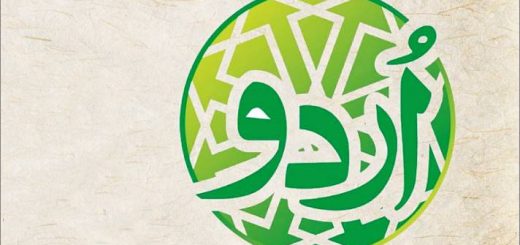Methods in Business Research: MBA Report
Methods in Business Research: MBA Report
EXECUTIVE SUMMARY
This report is the final step of the research project, in which we gathered the response of the sample regarding the market potential of the Enterprise Resource Planing System and the Customer Image of a software house.
The first step was the identification of the correct sample, which we identified on the basis of the nature of the research, as this research included the question about a software application we target the IT managers of local as well as multinational companies. The one important observation that we made about this sample was that local companies were more interested in the ERP application than the multinational companies.
The response was gathered using a questionnaire. This questionnaire was designed in
such a way to make use FishBein Model, which is specifically designed to make use indirect indicators. As the advantages of software application can not be directly measured that is why we made use of FishBein Model.
The questionnaire contained questions that allowed the respondent to list attributes regarding different ERP applications and the different local software houses. They were further required to give points to these attributes over a scale provided in the questionnaire. These points were then manipulated using a formula explained in the Appendix, to calculate the importance index.
The data collected in response of these questions is represented in the graphical form to indicate the relative an overall importance of these attributes.
CHAPTER 1
“TERMS & SYMBOLS USED”
| E.R.P | Enterprise Resource Planning |
| * | See Declaration |
| App | See Appendix |
| IT | Information Technology |
CHAPTER 2
Declaration
We were given this research project for our course ‘Methods in Business Research’ by one of the leading software houses in Pakistan to conduct a survey on one condition that we will not reveal their identity. We accepted their condition and are inclined not to reveal that and through out this report we would be referring to them with definite article the as ‘The Software-house’.
IT is being considered as a strategic tool and organizations are hesitant to disclose the information that we were looking for although we applied an indirect approach but still they wanted us not to reveal their identity and the information that we collected were most of the ‘Off the Record’. Again we refrain from disclosing our respondents identity as per our promise.
CHAPTER 3
1. Research Objectives
- To get the ‘Customer Image’ of *‘The Software-house’.
- To Find out the potential demand for E.R.P. (Enterprise Resource Planning)
2. Research Tools Used
- Personal Interviews
- Questionnaire
- FishBein Model
- Constant Sum Scale
- Semantic Differential Scale
2.1 Reason for using a Particular Research Tool
2.1.1 FishBein Model
The reasons for using this model are;
- Attributes/Benefit: The true aim of using this model was to find out about the attributes or immediate benefits that people look for while choosing a particular software house or a software. This would give a list of different attributes so that a software vendor can utilize them in their marketing strategies.
- Importance Index: The respondent was asked to allot points to each attribute on the basis of importance on the scale of –10 to +10. This would give a magnitude of importance for each attribute that the respondent mentioned.
- Applicable to the local Market: This model is one the few that is being adjusted to the local market by Gallup Business Research (Pvt.) Ltd.
- Scale of –10 to +10: The need for choosing this range of scale for our FishBein model was because of the psychology of our society. Mr. Hussaini from Gallup gave this advice to us.
App.: For mathematical calculation of FishBein model please see the Appendix
2.1.2 Constant Sum Scale
This scale was used to get the overall or global image of *‘The Software-house’ or the E.R.P compared with the Competitors where respondents were asked to allot 100 points among the choices.
2.1.3 Semantic Differential Scale
This scale was used to find out the relative importance the organization place for IT and it gives that in somewhat numerical form that is easy to interpret.
CHAPTER 4
Data Collection & Sample Size
We wanted to get the global idea of the general organization philosophy regarding IT that is why we applied a random sampling based on chance. We approach the guests who attended the MIS annual corporate dinner, guests who attended the IQRA Conference and also guests who were there at the launching of Textile Software by Faith Associates at Pearl Continental Hotel, Karachi and we also visited different organizations located at I.I Chundrigar road, Sharah-e-Faisal, and S.I.T.E area for manufacturing industries. We were managed to get hold of 50 organizations in all. Please note that the responses could be the opinions of the respondents not necessarily that these organization are using the E.R.P’s for example.
Other Constraints
While conducting this research, there were, however some other limitations, mainly due to time constraint and hesitation on part of respondents. These must be kept in mind while reading the results.
- Sample is geographically dispersed, the access to all the units is a troublesome job.
- The questionnaires distributed through e-mail have associated with them a considerable non-response error (of both types).
- At a number of occasions non-response is due to no proper documentation or maintenance of records of the applications developed.
- At times respondents showed complete inability to reply to the questions (in the personal interviews and telephone interviews), terming them confidential.
- Some times lower staff would not oblige saying, only the head of the organization can answer these questions and to get hold of that person was a troublesome task considering our tight schedule.
- No mentioning of specific applications in a particular field is also a source of error.
Last but not the least our limited resources such as time, logistics and limited cash compelled us to limit our scope of study to a narrower circumference. As such the results cannot and should not be fully generalized for the entire Industry.
CHAPTER 5
Evaluation of Data Collected
1. Data Reduction
1.1 Field Control
To check the validity of data collected we introduced an E.R.P from our own imagination Corp Link there is no such E.R.P in the market. It amazing that some of the responses showed that people had knowledge of our forge E.R.P and they allocated points to it. Similarly we did that with the Software-houses names by giving a false name of BangSoft in some of the Questionnaires and those who responded to these dummy variables are excluded from our data evaluation.
1.2 Editing
We had to edit the data in case of attributes mentioned but not given points as in questions # 2 & 11 of our questionnaire. We allocated zero equivalent to 50 points on our scheme of coding the attribute points on a scale of –10 to 10 converted to scale 0 to 100 to apply FishBein model. The details of the analysis of FishBein follows later in the report.
1.3 Coding
- Question 1 of Questionnaire (Constant Sum Scale 100 Pts allocation )
| Software Houses Global Image Pts. | |
| Sidat Hyder | 25 |
| Ace Aims | 22 |
| KPMG | 18 |
| Cressoft | 22 |
| Systems Limited | 6 |
| Faith Associates | 1 |
| Progressive Systems | 1 |
| InfoSoft | 1 |
| Sulsoft | 1 |
| Cooper & Lybraud Consulting | 1 |
| ITIM | 1 |
| InfoSoft | 1 |
- Question 2 of Questionnaire (FishBein Model Applied on software houses)
| Attributes | KPMG | Faith Ass. | Cressoft | Ace Aims | Sidat Hyder | Sys Ltd. |
| after sales service | -1 | -3 | 2 | -2 | 1 | -2 |
| career knowledge | 3 | -2 | 4 | 2 | 1 | 2 |
| cost of service | 1 | 2 | -1 | -3 | -2 | -2 |
| Documentation procedures | 7 | 5 | 6 | 5 | 6 | 6 |
| facilities | 0 | 0 | 10 | -10 | -10 | 10 |
| Marketing | 0 | 0 | 10 | 10 | 10 | -10 |
| previous projects | 7 | 5 | 7 | 5 | 6 | 6 |
| project management | 8 | 0 | 10 | 0 | 0 | 0 |
| Reliability | 5 | -3 | 1 | -2 | 1 | -2 |
| software /product | 4 | 0 | 4 | 1 | 5 | 4 |
| subject understanding | 2 | -5 | 3 | 0 | 2 | 3 |
| Support | 8 | 0 | 10 | 0 | 0 | 0 |
| technical team | 7 | 5 | 7 | 5 | 6 | 6 |
| Technology | 0 | 0 | 10 | 10 | 10 | -10 |
| their leaders | 10 | 0 | 0 | 10 | 10 | 0 |
| tools selected | 7 | 5 | 8 | 6 | 6 | 6 |
| Training | 8 | 0 | 10 | 0 | 0 | 0 |
| user friendly | 2 | -1 | 3 | 1 | 3 | 3 |
- Question 3 of Questionnaire (Open ended, % is given on the basis of response frequency)
Software |
Response Frequency (%) |
| BPCS | 16 |
| MS Project | 40 |
| Visual FoxPro | 60 |
| Sure track | 6 |
| Primavera | 20 |
| Oracle | 40 |
| MS office / mail/back office | 100 |
| Linux | 5 |
| SQL server | 27 |
| Visual tools | 3 |
| Abode | 2 |
| Corel | 4 |
| front page | 8 |
| 3D studio | 2 |
| BSDI | 3 |
| SCO Unix | 19 |
| Lisp | 7 |
| Informix | 6 |
| In house developed software | 35 |
| Developer 2000 | 30 |
| Visual Basic | 37 |
- Question 4 of Questionnaire (Forced Scale)
| Recommended Percentage of Budget for IT (%) | Response Frequency (%) |
| 0 – 10 | 90 |
| 11-20 | 10 |
| 21-30 | 0 |
| 31-40 | 0 |
| 41-50 | 0 |
| 51-60 | 0 |
| 61-70 | 0 |
| 71-80 | 0 |
| 81-90 | 0 |
| 91-100 | 0 |
- Question 5 of Questionnaire( Forced Scale)
| Recommended Percentage of IT Role(%) | Response Frequency (%) |
| 0 – 10 | 64 |
| 11-20 | 15 |
| 21-30 | 11 |
| 31-40 | 10 |
| 41-50 | 0 |
| 51-60 | 0 |
| 61-70 | 0 |
| 71-80 | 0 |
| 81-100 | 0 |
- Question 6 of questionnaire (Semantic Differential Scale)
Present role of IT in Organization |
Points |
Frequency of response |
| Extremely Important | 5 | 6 |
| Very Important | 4 | 12 |
| Moderate | 3 | 26 |
| Less Important | 2 | 30 |
| Not Important | 1 | 10 |
| Don’t Know | 0 | 16 |
- Question 7 of Questionnaire (open ended)
Departments to be Computerized |
% Response Frequency |
| Accounting | 70 |
| Customer Service | 54 |
| Dealings | 20 |
| Finance | 80 |
| HR | 90 |
| Manufacturing | 40 |
| Marketing | 60 |
| Operations | 50 |
| Production | 40 |
| Sales | 60 |
| Settlements | 70 |
- Question 10 of questionnaire (Constant sum 100 Pts. Allocation)
| Global image of ERP’s |
Pts |
| JD Edwards | 40 |
| People Soft | 4 |
| Oracle Financial | 30 |
| Baan | 2 |
| SAP | 23 |
| BPCS | 1 |
| Platinum | 0 |
- Question 11 of questionnaire (FishBein model)
| Software Houses | |||||
| Attributes | SAAP | JD ED. | ORACLE FIN | P. SOFT | BAAN |
| available expertise | 10 | 8 | 10 | 8 | 0 |
| better help (on line) | 8 | 7 | 9 | § | 0 |
| cost | 8 | 8 | 7 | 6 | |
| ease of use | 6 | 4 | 7 | § | 0 |
| efficiency in terms of reduction in process/procedures |
8 |
6 |
10 |
7 |
6 |
| functionality | 10 | 8 | 10 | 8 | |
| Future compatibility (Inter relatedness) | 5 | 10 | -10 | -10 | |
| hardware requirements | 3 | 6 | 5 | 5 | § |
| less complex | 5 | -3 | 1 | -9 | |
| quality of maintenance | 8 | 5 | 8 | 5 | -7 |
| RDBMS | 8 | 7 | 10 | -10 | § |
| Reliability | 10 | 8 | 5 | -7 | |
| support services | 7 | 7 | 7 | -5 | § |
| training | 8 | 7 | 6 | § | § |
| Y2K | 10 | 0 | 10 | -10 | 2 |
1.4 Transcribing Data (Applying FishBein Model)
- Importance Index calculation for E.R.P attributes
| Attributes | Frequency Of Response | Importance Index |
| available expertise | 19 | 0.38 |
| better help (on line) | 11 | 0.22 |
| cost | 23 | 0.46 |
| ease of use | 10 | 0.2 |
| efficiency in terms of reduction in process/procedures | 21 | 0.42 |
| functionality | 18 | 0.36 |
| Future compatibility (Inter relatedness) | 11 | 0.22 |
| hardware requirements | 15 | 0.3 |
| less complex | 12 | 0.24 |
| quality of maintenance | 4 | 0.08 |
| RDBMS | 9 | 0.18 |
| Reliability | 13 | 0.26 |
| support services | 16 | 0.32 |
| training | 20 | 0.4 |
| Y2K | 7 | 0.14 |
- Points allocation on the basis of importance index (E.R.P attributes)
| Attributes | SAAP | J.D. EDWARDS | ORACLE FINANCIAL | PEOPLE SOFT | BAAN |
| available expertise | 38 | 34.4 | 38 | 34.4 | 19 |
| better help (on line) | 19.8 | 18.7 | 19.9 | 11 | 11 |
| cost | 41.4 | 41.4 | 39.1 | 36.8 | 23 |
| ease of use | 16 | 0.14 | 17 | 10 | 10 |
| efficiency in terms of reduction in process/procedures | 37.8 | 33.6 | 42 | 35.7 | 33.6 |
| functionality | 36 | 32.4 | 36 | 32.4 | 18 |
| Future compatibility (Inter relatedness) | 16.5 | 11 | 11 | 0 | 0 |
| hardware requirements | 19.5 | 24 | 22.5 | 22.5 | 15 |
| less complex | 18 | 8.4 | 13.2 | 12 | 1.22 |
| quality of maintenance | 7.2 | 6 | 7.2 | 6 | 1.2 |
| RDBMS | 16.2 | 15.3 | 18 | 0 | 9 |
| Reliability | 26 | 13 | 23.4 | 19.5 | 3.9 |
| support services | 27.2 | 27.2 | 27.2 | 8 | 16 |
| training | 36 | 34 | 32 | 20 | 20 |
| Y2K | 14 | 7 | 14 | 0 | 8.4 |
| Total Points | 350.6 | 306.54 | 360.5 | 248.3 | 189.32 |
- Importance Index calculation for Software-Houses’ attributes
| Attributes | Frequency of Response(f) | Importance Index |
| after sales service | 19 | 0.38 |
| career knowledge | 2 | 0.04 |
| cost of service | 15 | 0.3 |
| documentation procedures | 19 | 0.38 |
| facilities | 7 | 0.14 |
| marketing | 17 | 0.34 |
| previous projects | 18 | 0.36 |
| project management | 18 | 0.36 |
| reliability | 11 | 0.22 |
| software /product | 16 | 0.32 |
| subject understanding | 4 | 0.08 |
| support | 12 | 0.24 |
| technical team | 19 | 0.38 |
| technology | 7 | 0.14 |
| thier leaders | 14 | 0.28 |
| tools selected | 13 | 0.26 |
| training | 19 | 0.38 |
| user friendly | 20 | 0.4 |
- Points allocation on the basis of importance index (Software-Houses’ attributes)
| Attributes | KPMG | Faith Associates | Cressoft | Ace Aims | Sidat Hyder | Systems Limited |
| after sales service | 17 | 13 | 23 | 15 | 21 | 15 |
| career knowledge | 2.6 | 1.6 | 2.8 | 2.4 | 2.2 | 2.4 |
| cost of service | 16.5 | 18 | 13.5 | 10.5 | 12 | 12 |
| documentation procedures | 32.3 | 28.5 | 30.4 | 28.5 | 30.4 | 30.4 |
| facilities | 7 | 7 | 14 | 0 | 0 | 14 |
| marketing | 17 | 17 | 34 | 34 | 34 | 0 |
| previous projects | 30.6 | 27 | 30.6 | 27 | 28.8 | 28.8 |
| project management | 32.4 | 12 | 36 | 18 | 18 | 18 |
| reliability | 16.5 | 7.7 | 12.1 | 8.8 | 12.1 | 8.8 |
| software /product | 22.4 | 16 | 22.4 | 17.6 | 24 | 22.4 |
| subject understanding | 4.8 | 2 | 5.2 | 4 | 4.8 | 5.2 |
| support | 21.6 | 12 | 24 | 12 | 12 | 12 |
| technical team | 32.3 | 28.5 | 32.3 | 28.5 | 30.4 | 30.4 |
| technology | 7 | 7 | 14 | 14 | 14 | 0 |
| their leaders | 28 | 14 | 14 | 28 | 28 | 14 |
| tools selected | 22.1 | 19.5 | 23.4 | 20.8 | 20.8 | 20.8 |
| training | 34.2 | 19 | 38 | 19 | 19 | 19 |
| user friendly | 24 | 18 | 26 | 22 | 26 | 26 |
| Total Points | 368.3 | 267.8 | 395.7 | 310.1 | 337.5 | 279.2 |
CHAPTER 6
Research outcome Conclusion and suggestion
The outcome of this research in a nut shell could be that, IT is highly unreliable, unpredictable, and constantly changing phenomenon.
It is really hard to say for sure that a market leader of today will remain the leader tomorrow. The graphical results of this research and report may not be applicable in a shorter period like a month speed, efficiency and the creativity are names of the game.
All these could be futile if a software house over looks marketing and proper management.
The results indicate that no software house enjoys the monopoly that is there is no true market leader. Some lack in technical aspects some in marketing and someone management.
The market for IT and software in Pakistan is a bit confused the multi nationals take decision regarding their operations at their corporate headquarters abroad the local industry is unable to utilize IT effectively in their business operations most of them consider IT as supportive or unimportant.
The outcome of FishBein Model provides software houses an opportunity that customer looks for and the importance of that attribute is also indicated as perceived by different customers. By considering these attributes and their relative importance, a software house can concentrate his efforts in those particular areas.
We have also tried to find out the software that an organization is currently using and whether they have plans to computerize their different functional departments that could give them a direction to work for. They really have to try very hard for organizations are not willing to spend much on IT but their is a potential market for an aggressor and the one who can convince others effectively by highlighting the benefits of IT that one can provide
Appendix
In this research analysis we mainly realized upon FishBein Model, the mathematical calculations carried out indicated that what is current situation for different software houses as regard to the customer Image.
These calculations also helped us determine what are the attributes that a customer looks for a software house, how much an attribute important for a software house
The FishBein model is also applied to determine the market potential for ERP, and to determine the important attributes that a customer looks for, in any ERP system.
MATHEMATICAL CALCULATIONS FOR FISHBEIN MODEL
The attributes and their relative importance indicated by a scale range from –different respondents concerning the Software Houses and the ERP listed 10 to +10. This scale is interpreted into percentage by using following conversion method
Response Percentage
-10 O
-9 5
-8 10
-7 15
-6 20
-5 25
-4 30
-3 35
-2 40
-1 45
O 50
- 55
- 60
- 65
- 70
- 75
- \80
- 85
- 90
- 95
10 100
The response thus obtained is converted to a percentage which is then multiplied with importance index. The importance index is calculated as
Frequency of Response
Importance Index = Total number of Respondents
This importance Index as stated earlier is multiplied with the percentage obtained by converting response, using the scale mentioned above.
QUESTIONNAIRE
This survey is a part of our course “Methods in Business Research” at Center for Computer Studies of I.B.A Karachi. The information provided will be kept confidential and will be used for research purposes only.
- Please mention the names of software that you are using, presently
- What percent of your budget would you recommend for investment in business software application?
0% 10% 20% 30% 40% 50% 60% 70% 80% 90% 100%
- In your opinion how much part IT should play in an organization
0% 10% 20% 30% 40% 50% 60% 70% 80% 90% 100%
- How important the role of IT is in your organization?
Extremely Important Very Important Moderate Less Important Not Important
Don’t Know
- Do you plan for computerizing different departments, if yes, please mention the departments’ names?
- Please distribute 100 points among the following software houses, giving the most points to the one, you consider the best?
- Sidat Hyder
- Ace Aims
- KPMG
- Cressoft
- System Limited
- Faith Associates
- Are you using ERP applications. If yes, then select the application you are using
- JD Edward
- PeopleSoft
- Oracle Financial
- Baan
- SAP
- CorpLink
VII.Any Other
- If you are not using any of the ERP applications then do you plan for any?
YES ()
NO ()
- If you have choice of implementing any of the ERP applications, which one would you prefer the most. Please distribute 100 points among the applications according to your preference.
- JD Edward
- PeopleSoft
- Oracle Financial
- Baan
- SAP
- CorpLink
- Please mention five attributes that you consider before choosing a software house then allocate points on a scale of -10 to +10 to each software house on those attributes.
|
Attributes |
Software Houses | |||||||
| KPMG | Faith Associates | Cressoft | Ace Aims | Sidat Hyder Systems
Limited |
||||
- Please mention five attributes that you would consider before choosing an ERP application then allocate points on a scale of -10 to +10 to each of the following ERP applications on those attributes.
|
Attributes |
ERP Applications | ||||
| SAP | J.D Edward | Oracle Financial | People Soft | Baan | |
Name:
Designation:
Organization:














